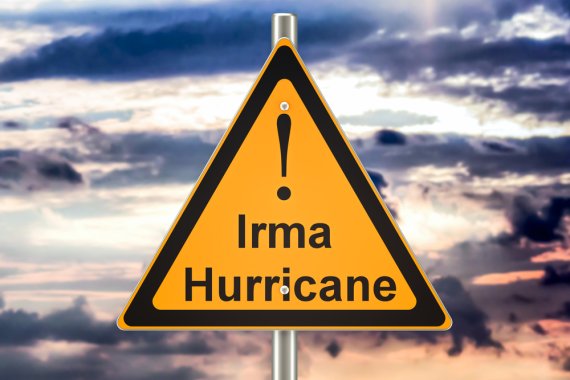His masterclass will be on classifying hurricanes and determining the wind speeds using satellites. A lot of research is also done within the hurricane itself.
Do you fly?
‘No, but when we were on our way to hurricane Ike in 2008, the crew asked if I didn’t want to fly a bit. The weather was clear, so I sat behind the co-pilot’s control wheel. Keeping the aeroplane straight was manageable. Then the pilot asked me to increase the plane’s altitude by 300 metres. That got entirely out of hand: the plane seemed out of control. And I just kept looking at the dials. I had no idea which movements the plane was making. Obviously, I should have been looking outside.’
Has flying through hurricanes been done for a long time?
‘Since World War II, but regularly with catastrophic consequences. They used to fly with aeroplanes that were much too light, and the speeds in a hurricane can even reach 300 km/h. Those small planes were basically flung out of the hurricanes. We fly in an Orion P3; a heavy aeroplane with four independent engines. So, if one of those fails, you can still keep flying.’

A hurricane, or tropical cyclone, can be seen as a gigantic swirling column of clouds, which can reach a height of fourteen kilometres. The eye of a hurricane can have a diameter of around ten kilometres, within which the weather is calm. Stoffelen usually flies through hurricanes at an altitude of two kilometres. The equipment on board measures parameters such as humidity, temperature and maximum wind speeds.
Nowadays, a lot of information is provided by satellites passing high above the hurricane. To gauge the measuring instruments on board the aeroplane, they must pass the hurricane at the same moment the satellite passes above it. The force of hurricanes is expressed using a number. A category five hurricane is a hurricane with the highest wind speeds. People are starting to speak up to extend the qualification to include a category 6 hurricane. Climate changes have caused hurricanes to increase in force.
How long is an average flight through a hurricane?
‘We fly within the hurricane for about five hours, starting from outside and toward the eye of the storm. And we keep flying perpendicular to the wind direction, causing the plane to lean over quite a bit. As we near the eye, thunderstorms, turbulence and rain increase very strongly.’
Doesn’t that cause the plane to shake about?
‘It certainly does, but we are usually completely bound to our chairs during the wildest episodes. If anything were to happen despite this, the sides of the plane are covered with matrasses, to protect both people and equipment, and there is a guiding bar attached along the full length of the cabin that you can grab to stay up when it gets too rough.’
You can register for the masterclasses via this intranet page (WUR account required). Registrations are on a first come, first serve basis.

